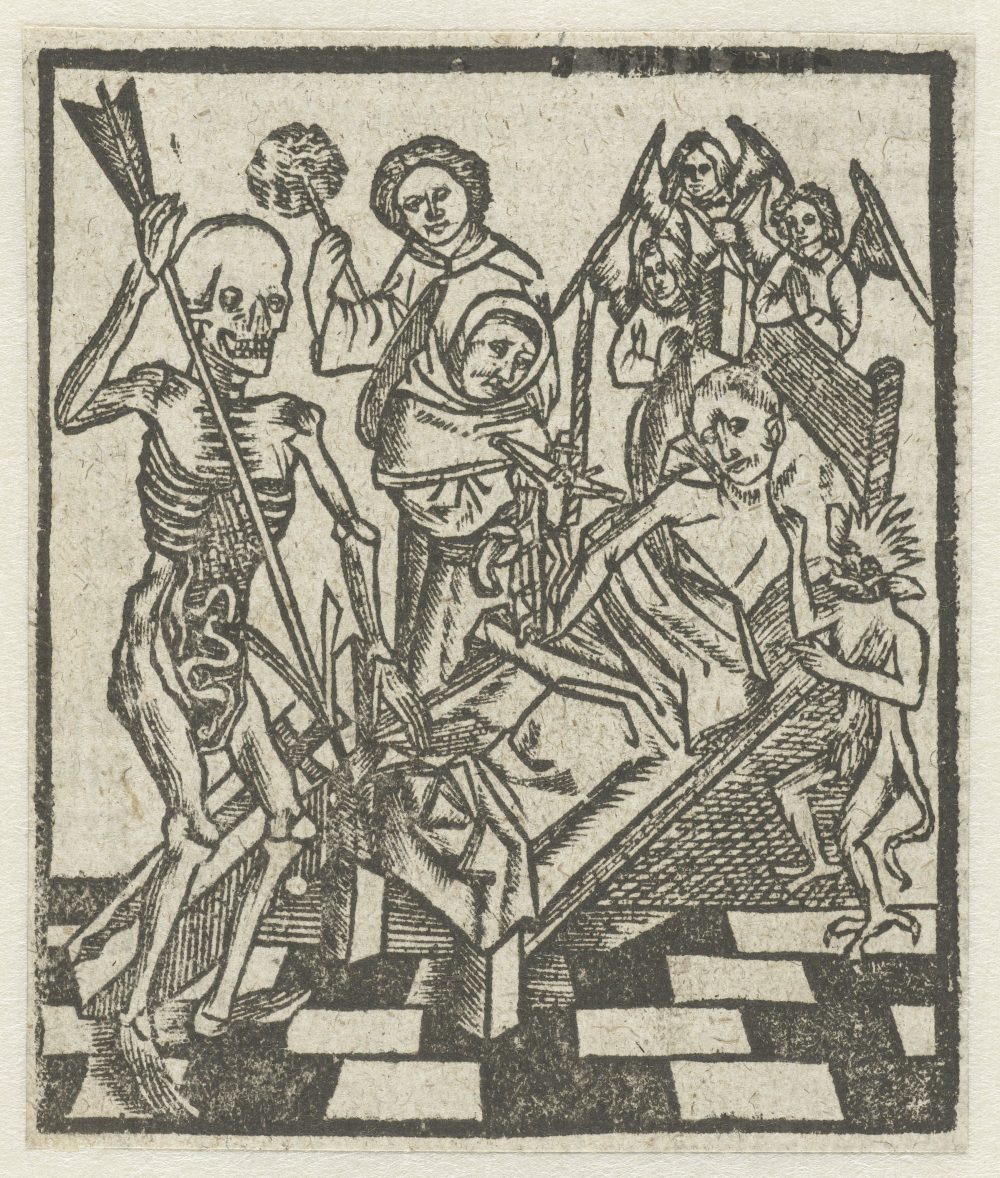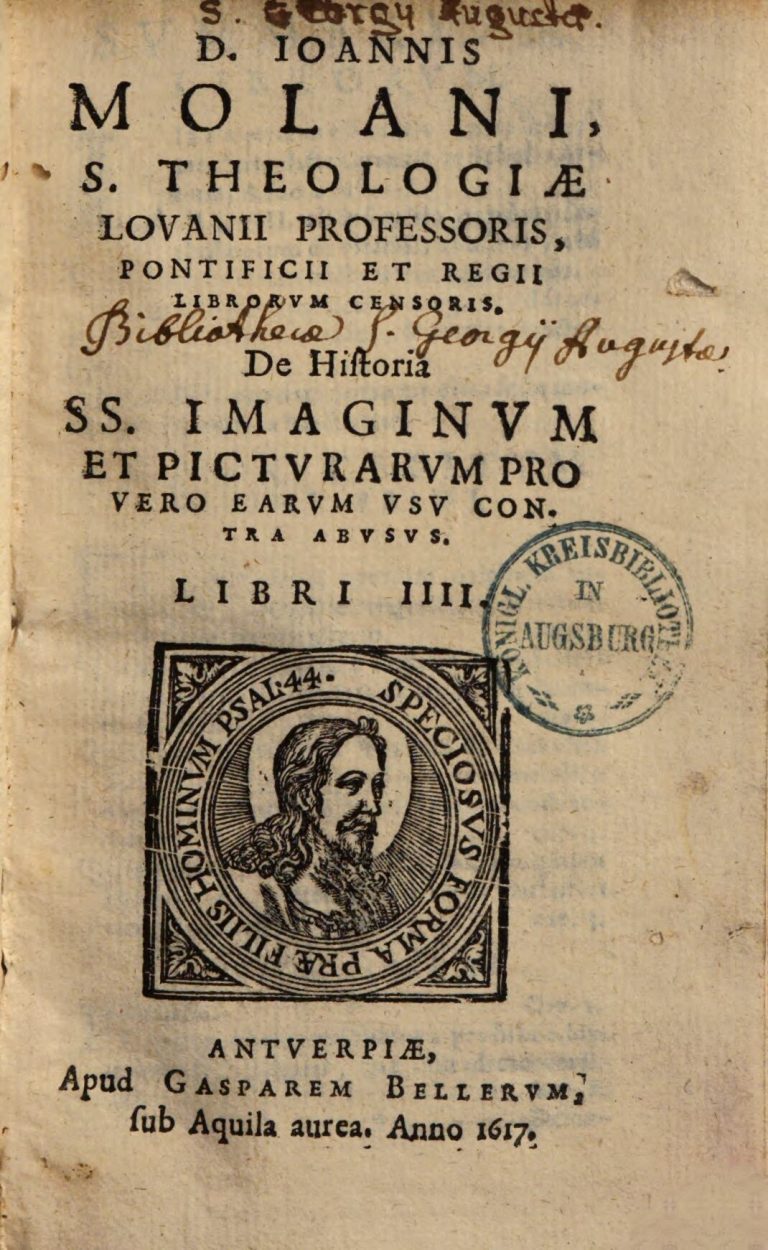
Rijksmuseum Amsterdam, http://hdl.handle.net/10934/RM0001.COLLECT.30346
Book 2 chapter 32 contains a continuation of the matters addressed in the preceding chapters, namely the question of what can be considered to be an error, whether it is dangerous and how to deal with them. This chapter can be considered to be the capstone of this argument in this part of the work, starting with clear errors and then moving on to issues which can be accepted according to the circumstances, now cases that can be accepted without any reservation are discussed. The two examples of iconographies presented in the chapter either derive from apocryphal sources or more popular backgrounds, however, because of their probability they are both approved by Molanus.
The second case presented in this chapter regards the depiction of a devilish or demonic creature in paintings of a dying person. Molanus affirms that this is allowed since it is in accordance with the teaching of the Church regarding the devil and death.
“Finally, one can without improbability paint somewhere in the image of a dying man a devil in great anger, ‘knowing how little time he has left.’ ‘For though our adversary seeks and endeavours to seize opportunities throughout our lives to devour our souls by every means, yet there is no time when he more violently deploys the powers of his cunning to lose us utterly, and, if he can, to turn us even from trusting in divine mercy, than when he believes the end of our life to be imminent.'”
“Ac postremo quidem non improbabiliter ad imaginem hominis morientis, alicubi diabolus appingitur habens iram magnam, ‘sciens quod modicum tempus habet.’ ‘Nam etsi adversarius noster occasiones per omnem vitam quaerat et captet, ut devorare animas nostras quoquo modo possit, nullum tamen tempus est quo vehementius ille omnem suae versutie nervos intendat ad perdendos nos penitus et a fiducia etiam si possit divinae misericordiae deturbandos, quam cum impendere nobis exitum vitae prospicit.'”

Molanus 1996, 215-216.



